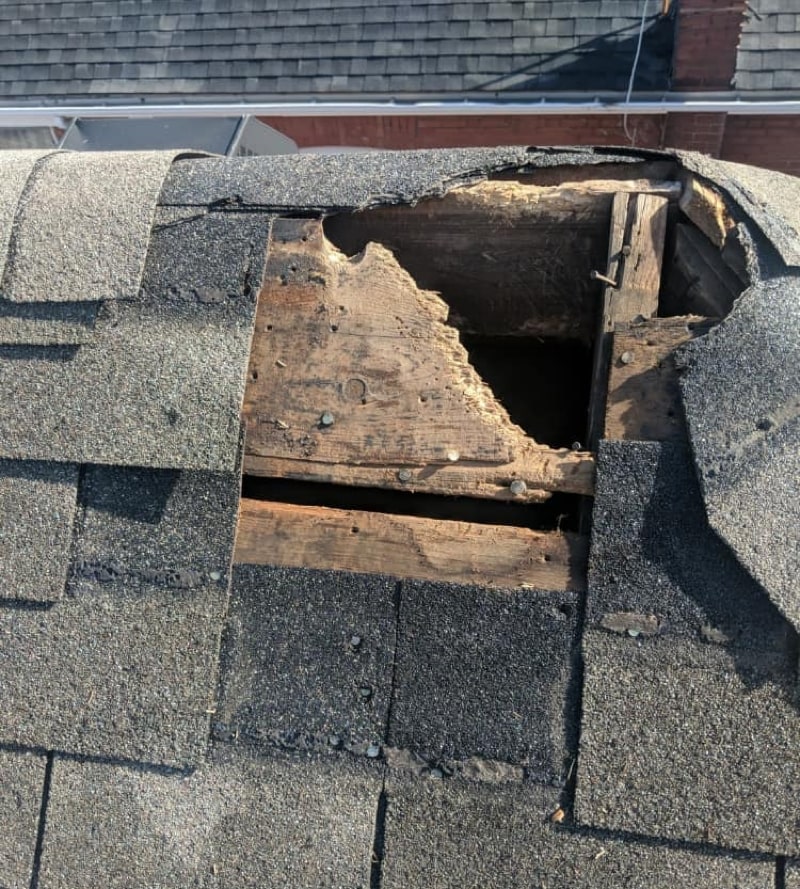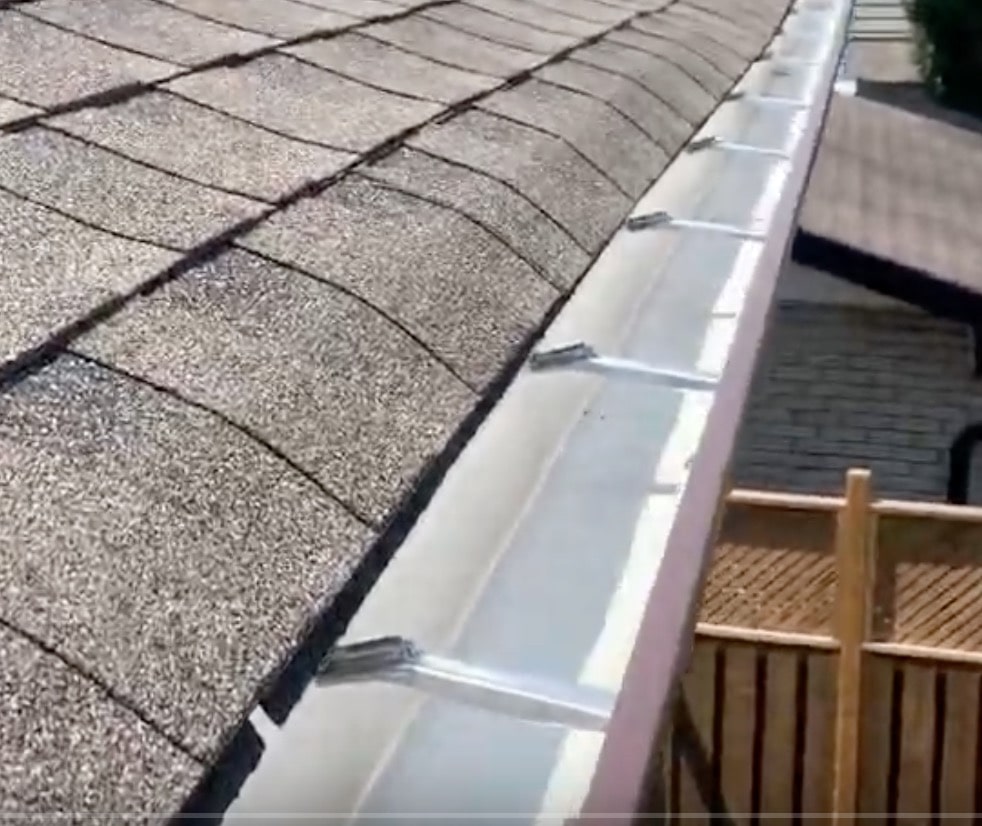Typical Forms of Wildlife That Break Into Attics
Posted on Wednesday, February 7th, 2024 | 158 views
 When it comes to roof and attic maintenance, the threat posed by wildlife is often ignored. Many homeowners are unaware of the variety of animals that can cause significant damage to their roofs so we’ve listed the most common types of animals below.
When it comes to roof and attic maintenance, the threat posed by wildlife is often ignored. Many homeowners are unaware of the variety of animals that can cause significant damage to their roofs so we’ve listed the most common types of animals below.
Understanding which creatures are likely to cause attic and roof damage can help prevent costly repairs and keep them from getting in.
Squirrel Breakins
We have found that squirrels are among the most common critters that cause roof damage besides raccoons.
They’re attracted to the warmth of attics and can sometimes easily chew through typical materials found on a roof to gain entry.
- Why they are a problem: Squirrels can gnaw on wood, insulation, electrical wiring, roof vents and cause structural damage.
- Signs of infestation: Look for chewed openings, scattered nesting materials, droppings and listen to the sounds of scurrying in your attic during the day or night.
- Prevention tips: Trim tree branches away from the roof, install squirrel guards on electrical lines, and ensure all vents and openings are securely covered.
Raccoon Intrusions
A lot of our customers call us to report significant damage caused by raccoons. Raccoons are capable of opening latches and tearing through roof materials to access attics.
- Why they are a problem: Raccoons cause significant damage to almost all area of a roof including the attic, the structure, support beams and insulation.
- Signs of infestation: Large holes in your roof, overturned trash cans, and noises are common indicators.
- Prevention tips: Secure garbage cans, use raccoon-proof latches on vents and chimneys, and regular inspections for signs of damage.
Mice Infestations
We don’t get many reports of damage from mice but when we do, we find they’ve caused significant damage and a big mess in an attic. They holes they chew are not that big so it’s hard to stop them and once they get in, they generally cause havoc to a roofing system.
- Why mice a problem: Mice chew through wires, make holes in the insulation, and chew out support beams. They’re also mostly responsible for causing fire hazards and generally compromise the integrity of the attic.
- Signs of infestation: Look for small droppings, chewing marks on wood or electrical wires, and listen for the sound of scurrying in the ceiling especially at night.
- Prevention tips: Seal up holes or gaps larger than a dime with steel wool and caulking, keep food in containers, and keep your home clean.
Taking proactive steps to deter mice is the only solution to keeping them away from your home or attic and reduce the need for costly repairs.
Bird Nests
Bird don’t really do much damage but they leave a big mess that could affect the integrity of your attic insulation.
- Why they are a problem: When birds nest they block ventilation systems, sometimes cause water damage, and leave droppings everywhere which can cause roof material degradation.
- Signs of infestation: Nesting materials in your vents and droppings along the roof or in the eavestroughs.
- Prevention tips: Install bird spikes or bird netting, and cover vents with bird-proof covers.
Bat Colonies
We’ve seen many attics with bat infestations and it’s not pretty. Although they don’t really cause attic or roof damage, they do leave a big mess.
- Why they are a problem: Piles of bat droppings and their urine can cause odours and significant staining.
- Signs of infestation: Piles of droppings in your attic our outside, and urine stains on the walls or ceilings.
- Prevention tips: Seal openings to your attic larger than a quarter-inch, install a bat house, and because of the laws surrounding bat removal, consult with a professional removal company.
Safeguarding Your Roof from Animal Damage
 Protecting your roof from wildlife is important but not that hard to do.
Protecting your roof from wildlife is important but not that hard to do.
The following simple measures can significantly reduce the risk of costly repairs, damage, and extend the life of your roof and ensure a secure roofing system.
Here are several effective strategies to safeguard your roof from animal intrusions:
- Install Drip Edge: Install Drip Edge to hinder animals from entering the gap between the roof-line and fascia board.
- Regular Inspections: Set up annual inspections to identify and repair minor issues caused by animals before the problem escalates.
- Trim Overhanging Branches: Trim tree branches away from the roof to stop access to animals.
- Secure Vents and Chimneys: Use a strong wire mesh and vent covers to keep animals out.
These steps – including the installation of a drip edge – will shield your roof from a range of potential damages caused by wildlife and ensure it remains in good condition.
Arrange Regular Roof Inspections
Regular roof inspections will save you a lot of money and stress. If you suspect that any animals are living in your attic, contact a professional wildlife removal service to humanely remove them, and contact your local roofing company to fix any damages. Being proactive here will ensure your home remains free of wild animals and in tip top condition for years to come.
Read More...
 Desi's Roofing has been providing high quality roofing services in Burlington since 1959 on a foundation of quality work and customer service. We publish these articles in order to help our customers and casual readers to get the most out of their roof and learn to manage and maintain it over the years.
Desi's Roofing has been providing high quality roofing services in Burlington since 1959 on a foundation of quality work and customer service. We publish these articles in order to help our customers and casual readers to get the most out of their roof and learn to manage and maintain it over the years.
If there is a particular subject you'd like us to write about feel free to contact us at 905-319-0880 anytime.
Leave a Reply